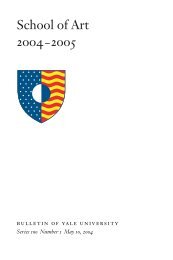Create successful ePaper yourself
Turn your PDF publications into a flip-book with our unique Google optimized e-Paper software.
ut the girls had even fewer opportunities to gain entitlement to food. Almost all of thechildren depended on food-stand operators and roadside-snack vendors for their “meals,”although many of the boys and girls in my sample ate a daily snack (usually a banana orsome biscuits/crackers) distributed by the street-children’s support center. Yet for all oftheir efforts the girls, in particular, usually acquired little by way of quantity, quality orvariety of food. Their diets were comprised largely of ugali, xxi uji (watery gruel madefrom millet, wheat, maize, or cassava flour) or rice with a side relish of kidney beansand/or spinach (or other cooked vegetable leaves). As a group the boys ate a slightlybetter diet because they could afford a little more animal protein such as fish, chicken,and goat meat. Six of the boys who attended school ate school lunches. They also weregiven a simple evening meal of beans and rice cooked at the local street-children’s centerbecause their schooling left them little time to earn extra money. In addition several boysate at the houses or apartments in which they washed clothes and scrubbed floors. If thegirls scavenged raw pieces of dried cassava root or caught grasshoppers they roastedthem over bits of charcoal found in waste heaps, but none of them regularly cooked food.Although the quantity and the quality of the food varied, the girls and boys employed atthe food-stands commonly were successful in eating at least two meals a day, which wasa relative bonanza for some of the children. As fifteen-year-old Regina stated, “I get morefood from the stand than I did at home in Sengerema.”Still there was a particular way in which some of Mwanza’s street youth obtainedfood—via private charity—that was key in delineating the street-credit economy andpower gradients therein. The children’s experiences with private charity also holdimportant implications for expanding the utility of Sen’s entitlement approach. For17














